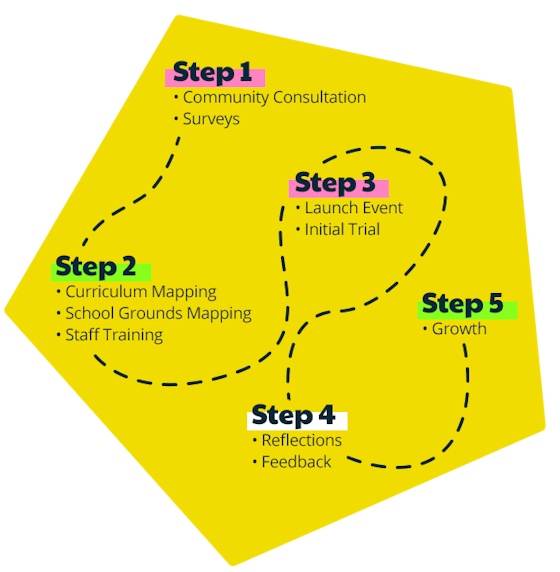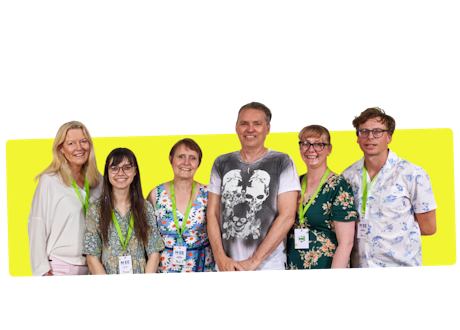
Whole School Journey
5 Step Whole School Journey
Step 1) Community Consultation / Surveys
Step one starts with conversations with key people in the school community including staff, students, parents and governors. It's important to share ownership and allow everyone to feel part of the process from the very beginning, this increases the impact and chances of success.
Use the conversations and surveys to explore people’s understanding of sustainability as well as their personal strengths and weaknesses.
By the end of this phase the school community will have an understanding of the aims of the curriculum and a shared language to communicate the journey.
Resources
Ideas for Active Listening - https://www.bhf.org.uk/informationsupport/heart-matters-magazine/wellbeing/how-to-talk-about-health-problems/active-listening
How to run a Citizen’s Assembly - https://www.sortitionfoundation.org/how
Step 2) Curriculum Mapping / School Grounds Mapping / Staff Training
This step is an opportunity to explore how green the school is right now.
Begin by mapping where sustainability exists within the school's current curriculum, wider school structures and school grounds.
Explore opportunities for staff training and linking with external organisations.
Resources
Step 3) Launch Event / Initial Trial
At first, schools might choose to incorporate a handful of topics within their curriculum and engage with the broader enrichment and philosophy of the approach. To build momentum and excitement, there’s the opportunity to launch the curriculum with a focussed week of events. This might include an opening assembly, a school fete or specific events for parents and the wider community. This week might fall at the beginning of the term when the curriculum is first being taught. A targeted initial trial also allows staff to explore and understand the guiding ethos and approach, this might be supported by support and training from organisations.
Resources
Step 4) Reflections / Feedback
At regular intervals, from individual lessons to termly and annually reviews, the framework provides opportunities to gather the community's reflections and feelings about the curriculum. Action can then be taken to shift course, adapt and build on successes whilst also continuously communicating with the school community.
Step 5) Growth
When the school community feels confident with the key principles of the framework there is then the opportunity for greater freedom and creativity. An example of this might be teachers creating their own using the framework or taking up opportunities to embed a greater number or more advanced enrichment learning activities.
